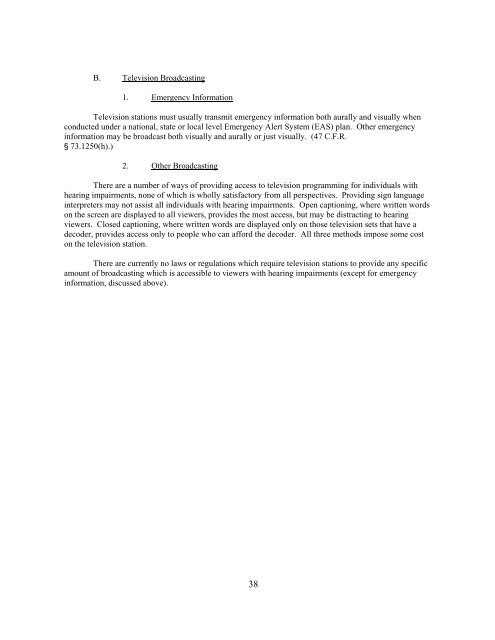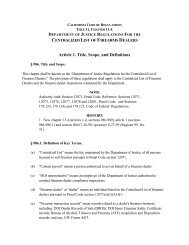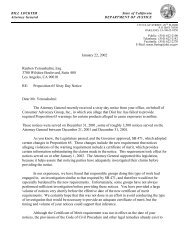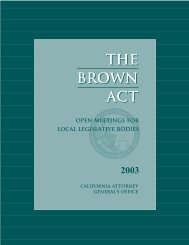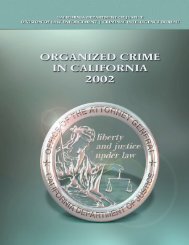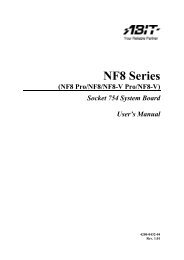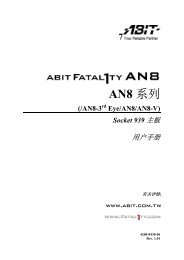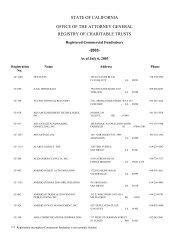Legal Rights of Persons With Disabilities - Ossh.com
Legal Rights of Persons With Disabilities - Ossh.com
Legal Rights of Persons With Disabilities - Ossh.com
You also want an ePaper? Increase the reach of your titles
YUMPU automatically turns print PDFs into web optimized ePapers that Google loves.
B. Television Broadcasting<br />
1. Emergency Information<br />
Television stations must usually transmit emergency information both aurally and visually when<br />
conducted under a national, state or local level Emergency Alert System (EAS) plan. Other emergency<br />
information may be broadcast both visually and aurally or just visually. (47 C.F.R.<br />
' 73.1250(h).)<br />
2. Other Broadcasting<br />
There are a number <strong>of</strong> ways <strong>of</strong> providing access to television programming for individuals with<br />
hearing impairments, none <strong>of</strong> which is wholly satisfactory from all perspectives. Providing sign language<br />
interpreters may not assist all individuals with hearing impairments. Open captioning, where written words<br />
on the screen are displayed to all viewers, provides the most access, but may be distracting to hearing<br />
viewers. Closed captioning, where written words are displayed only on those television sets that have a<br />
decoder, provides access only to people who can afford the decoder. All three methods impose some cost<br />
on the television station.<br />
There are currently no laws or regulations which require television stations to provide any specific<br />
amount <strong>of</strong> broadcasting which is accessible to viewers with hearing impairments (except for emergency<br />
information, discussed above).<br />
38


